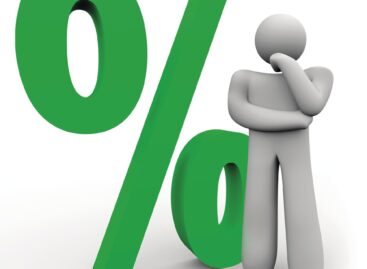Companies’ ability to generate income improves
Executive Summary
- Strong cash balances (EUR690bn above pre-crisis levels in the Eurozone and more than USD765bn in the US), as well as rising profitability and capex, are cushioning most US and Eurozone companies from high input prices – for now. But as the earnings season unfolds, the most pressing question is which firms will be able to offset higher wage bills with productivity enhancement, and bear increasing borrowing costs.
- With inflation set to remain above 2% until late 2023, corporates have the leeway to withstand a moderate monetary policy tightening cycle (around +100bp). However, should commodity prices, wages or interest rates rise more than expected, we find that the construction, power, metals and the US transport sectors are most at risk of a liquidity and profitability squeeze.
Strong cash balances, as well as rising profitability and capex, are cushioning most US and Eurozone companies from high input prices – for now. In 2021, input prices outpaced retail prices in most sectors, the result of supply-chain disruptions, the strong rebound in demand, constraints on the commodity supply and the rise of safety restocking. However, only about 40% of sectors on both sides of the Atlantic had retail prices rising faster than wholesale prices (see Figure 1). Over the long-term, 53% of Eurozone sectors (including automotive, sporting goods, pharmaceuticals) have seen retail prices grow faster than their wholesale prices against 25% for the US. And while a year-end survey showed that a majority of firms are planning to raise prices, we find that only a handful really have the ability to pass on higher input prices (see Table 1) – notably oil, air transport and textiles, as well as some sub-sectors of food manufacturing. In addition, some industries could face the prospect of risking increasing prices even as demand is waning.
With high input prices expected to persist until H2 2022, companies’ cash balances are key to cushioning the blow. Fortunately, these stand more than EUR690bn above pre-crisis levels in the Eurozone and more than USD765bn in the US (Table 2). In addition, since 2021, firms have also been increasing capex, mostly in reaction to supply-chain disruptions to avoid missed sales opportunities. This is echoed in the broad increase in inventories. Furthermore, pent-up demand in 2021 helped most firms preserve or even increase their margins. Overall, in our baseline scenario, we expect most sectors in both the US and the Eurozone to gain profitability in 2022 compared to 2021 (see Figure 2).
The increase in sales as estimated by sell-side analysts should allow firms to offset higher wages (+4.7% in the US and +2.5% in the Eurozone), higher interest rates (+75bps in the US and +25bps in the Eurozone) and higher oil prices – we expect an average Brent price of USD81 in 2022. In particular, we see strong profitability gains for the US construction and machinery & equipment sectors, and for the Eurozone household equipment industry. The Eurozone metals sectors, which performed very strongly in 2021, is expected to lose some profitability in 2022, mostly because of its higher energy bill.
Related news
The future of AI agents: key predictions and trends for 2026
🎧 Hallgasd a cikket: Lejátszás Szünet Folytatás Leállítás Nyelv: Auto…
Read more >How to prepare Christmas dinner on the kitchen stove?
🎧 Hallgasd a cikket: Lejátszás Szünet Folytatás Leállítás Nyelv: Auto…
Read more >Related news
(HU) A nap mondása
🎧 Hallgasd a cikket: Lejátszás Szünet Folytatás Leállítás Nyelv: Auto…
Read more >(HU) Kautzky Szemők Adrienn: Vigyázzunk a sarlatánokkal
🎧 Hallgasd a cikket: Lejátszás Szünet Folytatás Leállítás Nyelv: Auto…
Read more >The Hortobágy fish farm delivers one hundred tons of fish to stores every day
🎧 Hallgasd a cikket: Lejátszás Szünet Folytatás Leállítás Nyelv: Auto…
Read more >






